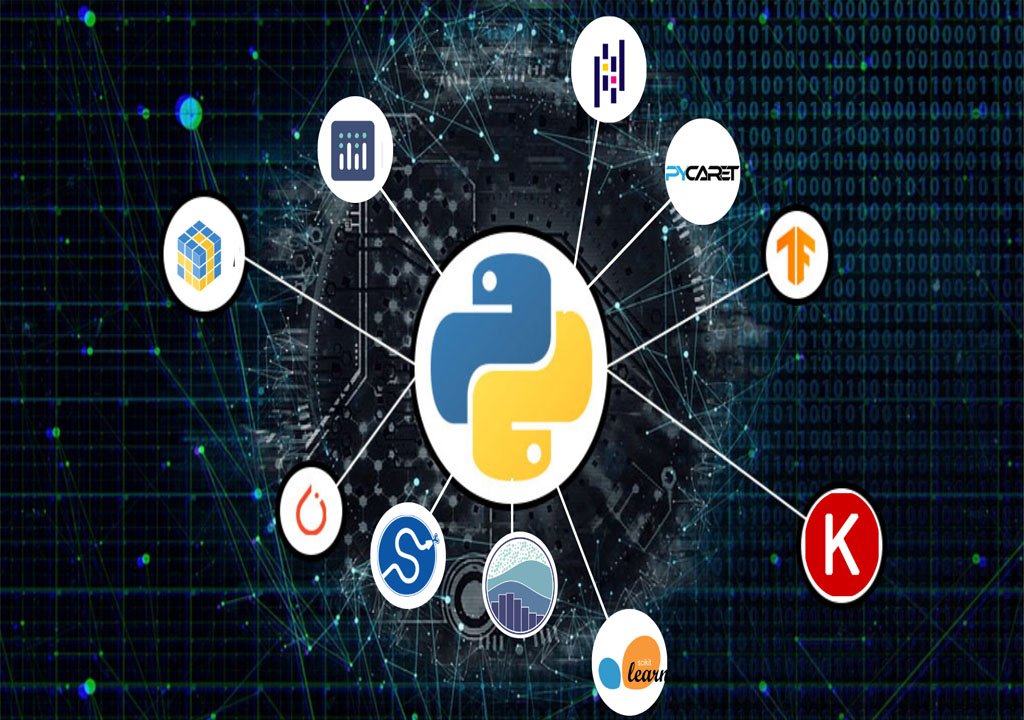Python is one of the most popular and widely used programming languages and has replaced many editing languages in the industry.
There are many reasons why Python is popular among developers and one of them is that it has an amazingly large collection of libraries that users can work with.
Here are a few key reasons why Python is popular:
- Python includes a vast collection of libraries.
- Python programming language for beginners because it is simple and easy.
- Moving from development to supply and maintenance of Python requires their engineers to be more productive.
Depression is one of the reasons why Python is so popular.
- Python system syntax is easy to read and advanced compared to C, Java, and C ++.
Therefore, only a few lines of code make new applications.
The simplicity of Python has enticed many developers to create new libraries. Among machine learning experts, python is becoming increasingly popular because of its large collection of libraries.
SO here are 10 Python libraries you should know about 2021.
- TensorFlow:
Tensor flow is a popular library, if you are working on machine learning projects in Python, you will be familiar with this. This library was developed by Google in partnership with the Brain Team. TensorFlow is part of almost every Google machine learning program.
TensorFlow serves as a library of new algorithms that include a large amount of tensor performance, because neural networks can be easily displayed as computer graphs can be created using TensorFlow as a series of functions in Tensors. Also, T matricors represent your data. You use TensorFlow every day but indirectly with apps like Google Voice Search or Google Images. These are TensorFlow apps.
- Scikit-Funda:
Skikit-Read Python library linked to NumPy and SciPy. It is regarded as one of the world’s most comprehensive libraries.
Many changes were made to the library. One conversion is a cross-reference feature, allowing you to use more than one metric. Many training methods such as recession and nearby neighbours have found little progress. It has many algorithms for using standard machine learning tasks and data mining functions such as size reduction, partitioning, reversing, merging and model selection.
- Numpy:
Numpy is regarded as one of Python’s best-known electronic books. TensorFlow and other libraries use Numpy internally to perform multiple Tensors functions. The Array display is the best and most important feature of Numpy. This visual connector can be used to display images, sound waves, and other green binary streams such as many real N-dimensional numbers.
- Ikera:
Kera is considered one of the coolest reading machines in Python. Keras also offers excellent models for modelling, data set processing, graph viewing, and much more. In the background, cameras use Tennis or TensorFlow inside. Other popular neural networks such as CNTK can also be used. The Kera are slow compared to other electronic libraries. Because it creates a calculation graph it uses back-end infrastructure and uses it to perform tasks. All camera types are portable.
- PIT:
PyTorch is a large machine learning library that allows developers to process tensor statistics at GPU speeds, create dynamic computational graphs, and calculate gradients automatically. Apart from this, PyTorch provides rich APIs to solve application issues related to neural networks. This electronic reading library is based on Torch, which is an open-source C-library in Lua.
6.LightGBM:
Gradient development is one of the best and most well-known machine learning tools, which helps developers to create new algorithms by re-using low-cost and high-resolution decision-making models. Therefore, there are specialized libraries available for quick and efficient use of this method.
These libraries are LightGBM, XGBoost, and CatBoost. All of these libraries are competitors who help solve the same problem and can be used in almost the same way.
- Eli5:
Most of the times guessing machine learning models have errors and Python Eli5 helps to overcome this challenge with the help of machine learning library built in it. It is a combination of identifying and correcting errors in all machine learning models and tracking all the steps of algorithm operation.
8.SciPy:
Software developers and engineers can use a software library called SciPy. But you should be familiar with the differences of SciPy library and SciPy stack. he SciPy library contains practical application modules, intuitive algebra, integration, and statistics.
SciPy is a library that uses NumPy for the purpose of solving mathematical tasks. SciPy uses the NumPy System as a basic data structure, and comes with a variety of function modules that are widely used in science programs.
- Theano:
Theano Python library for computer learning. Thenano works similar to TensorFlow, but it doesn’t work like TensorFlow. Because of its failure to penetrate production facilities. In addition, Theano can also be used on distributed or affiliate sites such as TensorFlow.
- Walls:
Pandas is a machine learning library in Python that offers high-quality data structures and a variety of analytics tools. One of the best things about this library is its ability to translate complex tasks and data using one or two commands. Pandas have a variety of built-in methods for group integration, data integration, and filtering, and time series operations.
Currently, there are a number of pandas libraries that include 100 new features, bug fixes, enhancements and changes to the API Improve the pandas according to their data collection and editing capabilities, select the best way to extract, and provide custom support.
Data analysis among all the others is highlighted when it comes to the use of Pandas.

